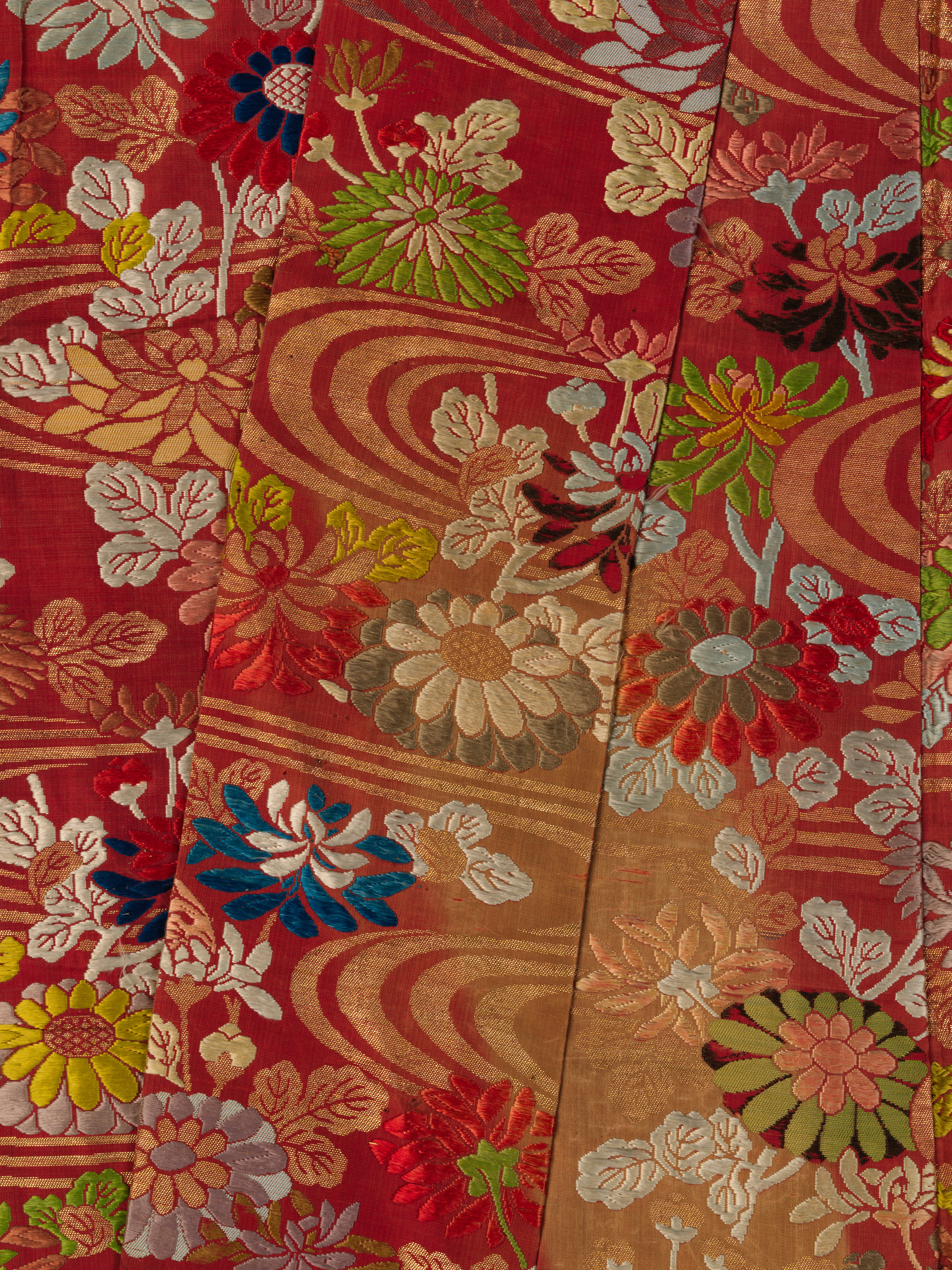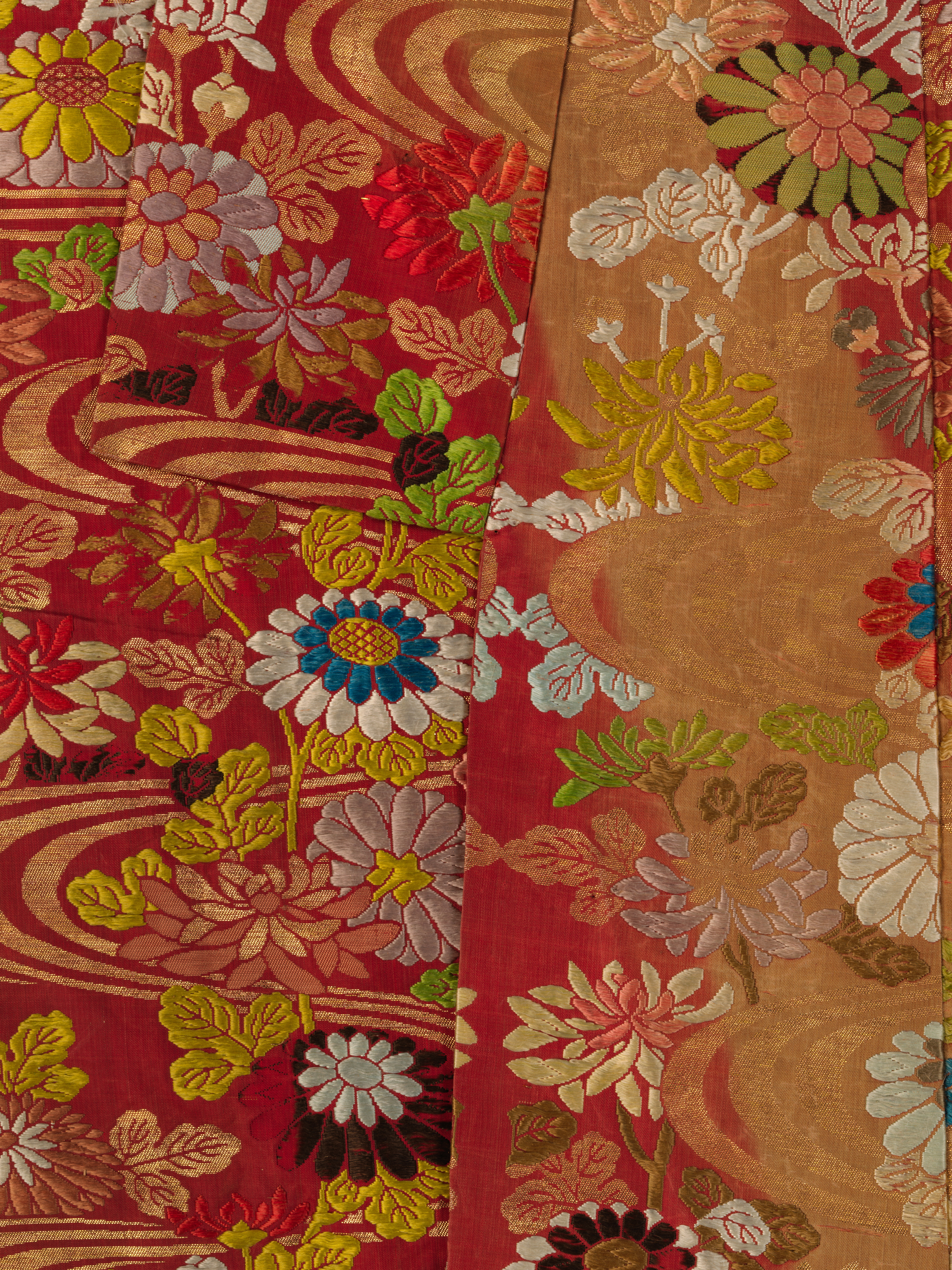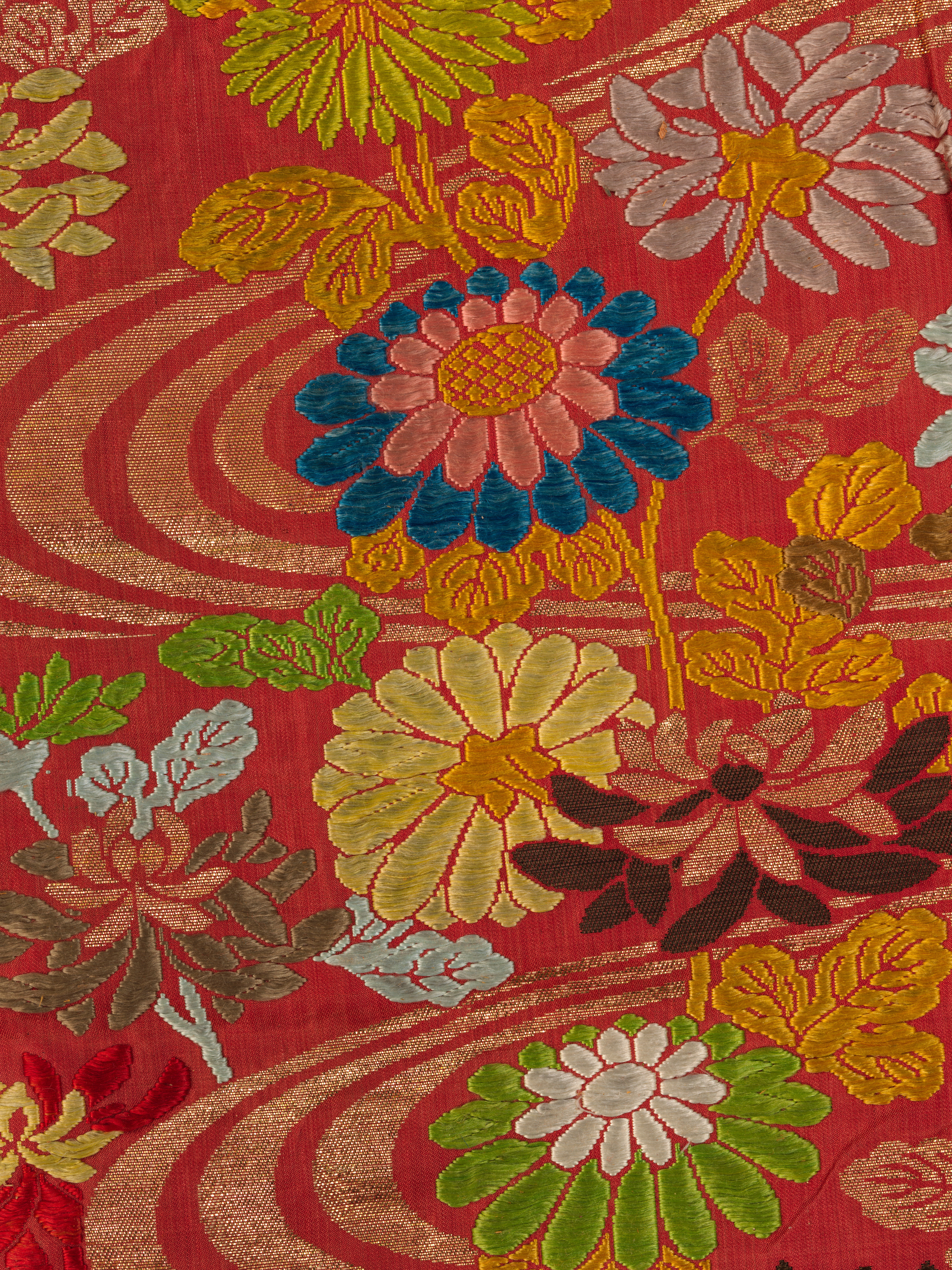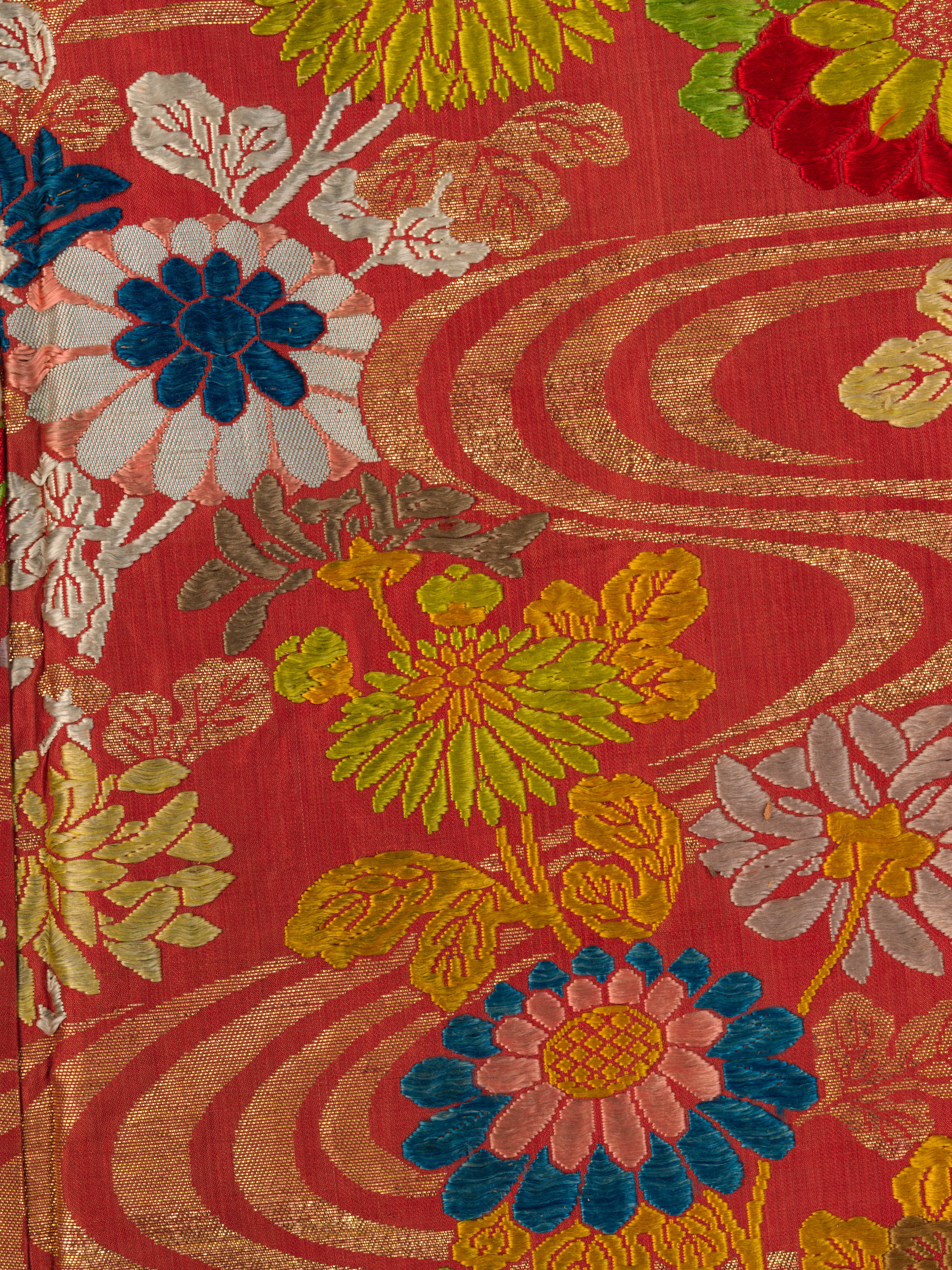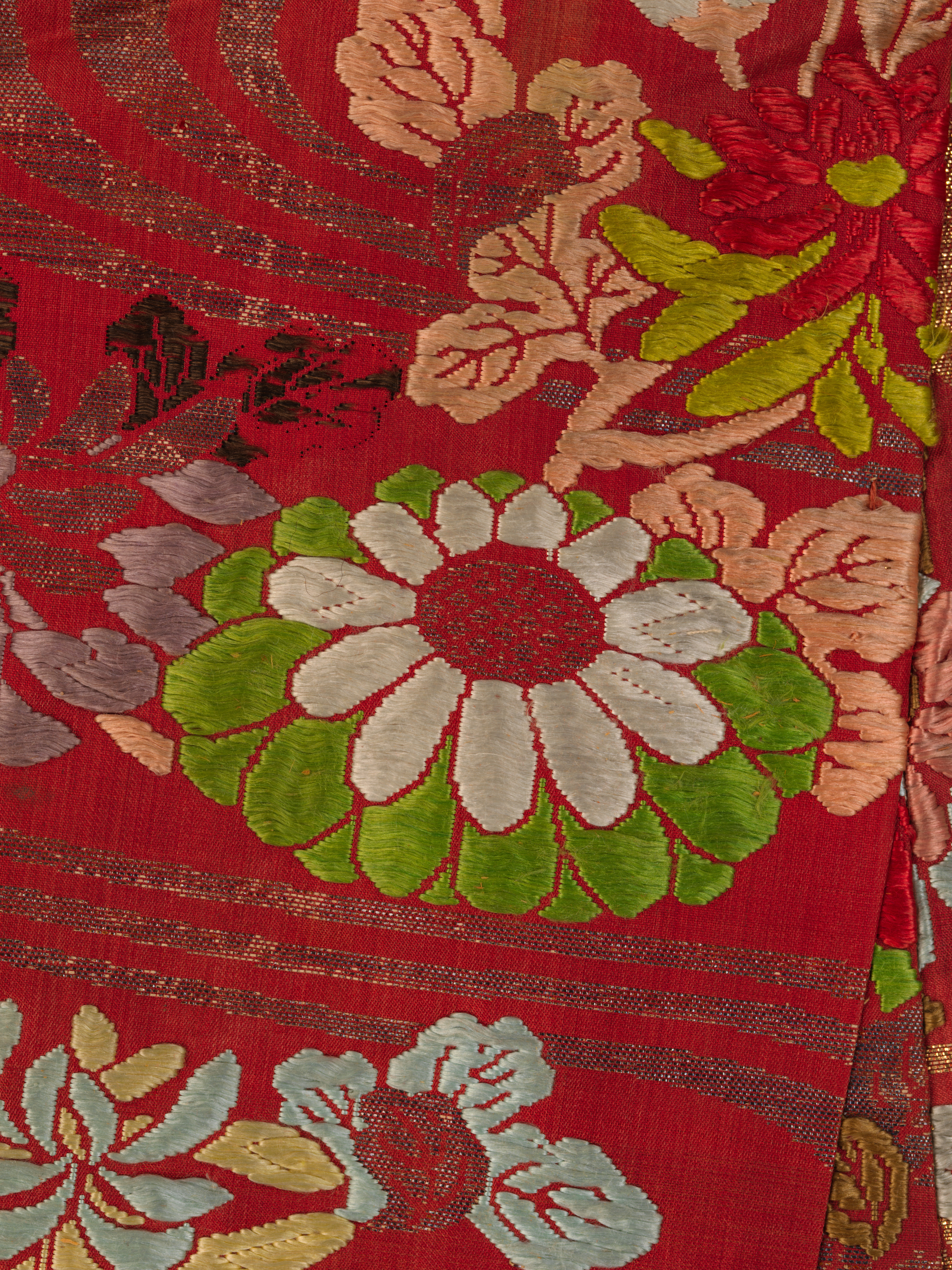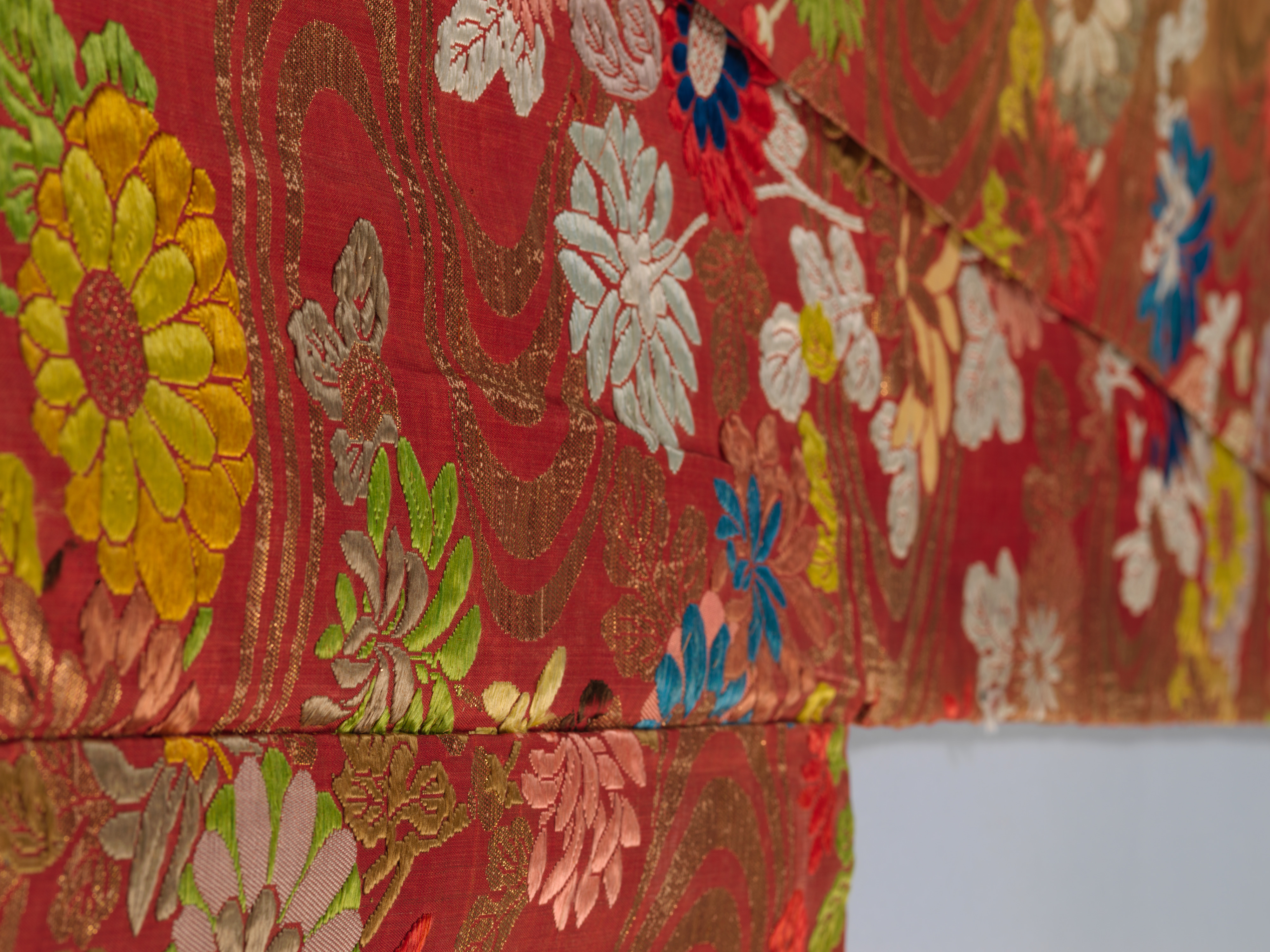Noh Robe (Karaori)
Once Noh theater was embraced by the military elite, costumes turned more elaborate. Karaori (literally, "Chinese weave") in exquisite patterns became one of the standard outer robes for female roles. One of the designs here features autumn grasses and blossoms—chrysanthemum branches, bush clovers, and balloon flowers—in vivid hues and gold against a rich backdrop composed of auspicious interlocking circles (shippō-tsunagi) woven with gold thread on red ground. The red color (iro-iri) indicates that the costume was made for the role of a beautiful young woman. The other robe is embellished with chrysanthemums by a stream, an auspicious symbol of longevity. The flowers are depicted in vivid colors, while the river is expressed in gold.
Due to rights restrictions, this image cannot be enlarged, viewed at full screen, or downloaded.
This artwork is meant to be viewed from right to left. Scroll left to view more.





